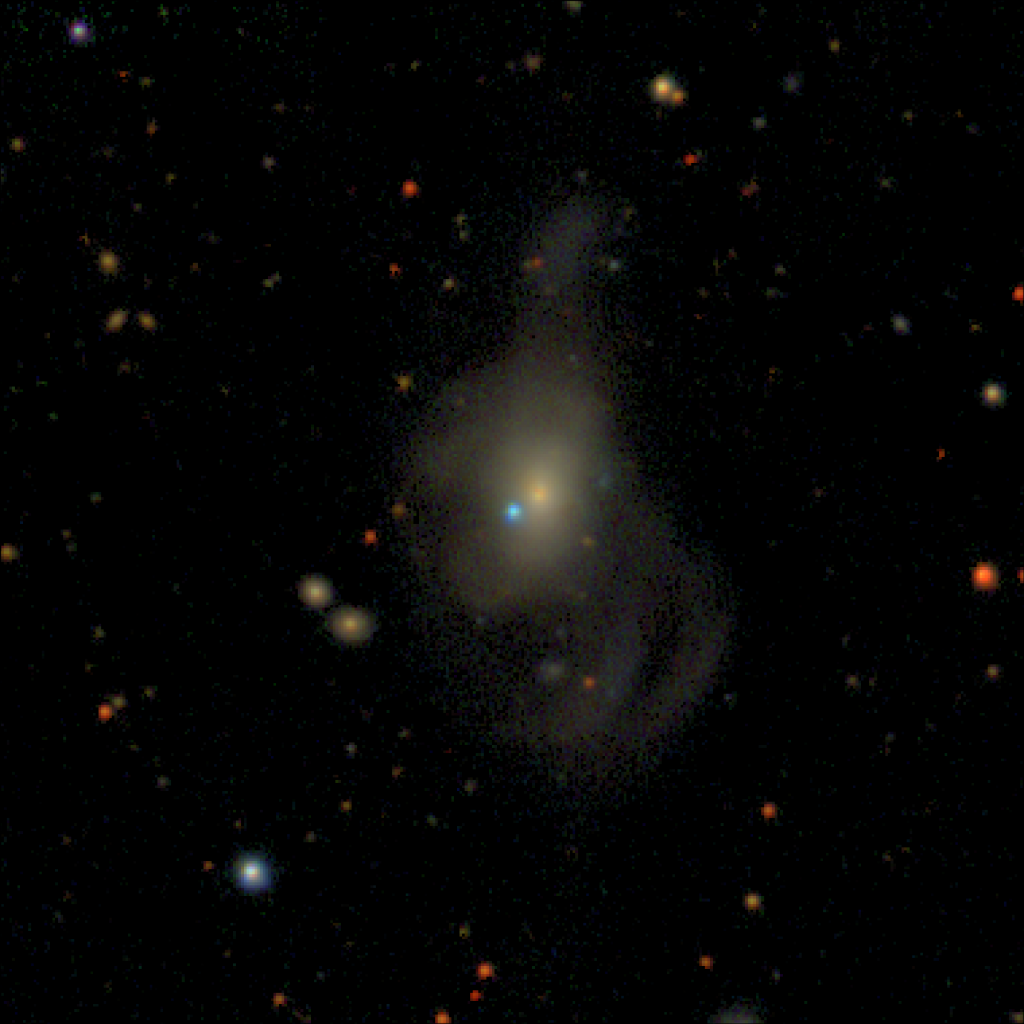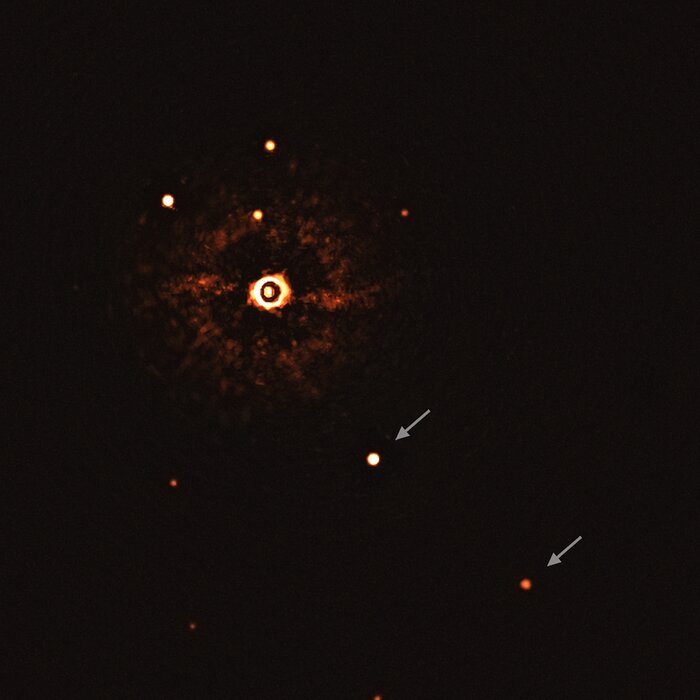Media
Transcript
NOTE: Stay tuned today at the end of the podcast and stream for the bonus content of the docking of the Progress 76 capsule at the International Space Station.
I would like to start today’s episode by congratulating China for launching their first solo mission to Mars. This is the second major launch of this launch window. Coming up July 30, we hope to see the launch of NASA’s Mars 2020 mission, but with hurricane season in full swing, we are all holding our breath a bit to see what actually happens.

Looking a bit farther out in the universe, astronomers using the Very Large Array radio observatory in New Mexico have mapped out the powerful magnetic field in the edge-on galaxy NGC 4217. This system is about 67 million light-years away, which makes it close enough to readily observe details. Using multiple techniques to detect magnetic fields, they were able to observe an incredible X-shaped structure that extends as much as 20,000 light-years from the galaxy disk, as well as bubbles associated with supernovae and an unusual helix structure.
Magnetic fields can align light waves so they have a specific polarization that can be filtered with telescopes. By looking at how much light has what kind of polarization, the magnetic fields can be mapped out. According to Rainer Beck: It is fascinating that we discover unexpected phenomena in every galaxy whenever we use radio polarization measurements. Here in NGC 4217, it is huge magnetic gas bubbles and a helix magnetic field that spirals upwards into the galaxy’s halo.
Beck is a co-author of a new paper appearing in Astronomy & Astrophysics with lead author Yelena Stein. Stein goes on to add: This has never been observed before. We suspect that the structures are caused by star formation because at these points matter is ejected outward.
Magnetic fields are one of the harder to understand phenomena in our universe
In general, we know that charged particles in motion generate magnetic fields. In space, this means ionized gas or plasma in motion, such as plasma orbiting in a galaxy or expanding outward from a supernova.
Studying this galaxy-spanning magnetic field is the kind of careful, no-luck required, detail work I love. A research team says they are going to look for something, they get their telescope time, they do their science, and the results prove or disprove what they hoped they’d see.
Not everyone likes this kind of predictable way of doing science. For those who like things on the wild side, we have supernovae.
In December 2019, the Zwicky Transient Facility (ZTF) discovered a new supernova, SN2019yvg. Discovering a supernova isn’t particularly unusual for this telescope, but this particular supernova was a weirdo. In follow-up observations, NASA’s Neil Gehrels Swift Observatory spotted an ultraviolet flash such as has only been seen once before.

Why ultraviolet flashes are rare, we have no idea, but time should literally allow us to tell as the gas in the supernova remnant thins and allows us to look deep into the supernova remnant to see what remains.
According to the press release: Miller and his team believe this is an important clue to understanding why white dwarfs explode, which has been a long-standing mystery in the field. Currently, there are multiple competing hypotheses. Miller is particularly interested in exploring four different hypotheses, which match his team’s data analysis from SN2019yvq.
Potential scenarios that could cause a white dwarf to explode with a UV flash are:
- A white dwarf consumes material from its companion star and becomes so massive and unstable that it explodes. The white dwarf’s expelled material and the companion star collide, causing a flash of UV emission;
- Extremely hot radioactive material in the white dwarf’s core mixes with its outer layers, causing the outer shell to reach higher temperatures than usual;
- An outer layer of helium ignites carbon within the white dwarf, causing an extremely hot double explosion and a UV flash;
- Two white dwarfs merge, triggering an explosion with colliding ejecta that emit UV radiation.
“Within a year,” Miller said, “we’ll be able to figure out which one of these four is the most likely explanation.”
Our abilities to image things improve in two ways: we can build bigger telescopes that are capable of gathering more light and seeing both fainter objects and resolving smaller objects. We can also build better and better cameras that capture light more effectively, and take full advantage of the telescopes they are mounted too.
When a great telescope is combined with a great camera, wildly awesome things are possible. In my humble opinion, there is no better telescope than the European Southern Observatory’s (ESO) Very Large Telescope (VLT), and its Spectro-Polarimetric High-contrast Exoplanet REsearch (SPHERE) instrument is arguably one of the best cameras out there. Working together, this system has captured the first-ever image of multiple exoplanets orbiting a star. This stunning image of TYC 8998-760-1 appears in a new paper in The Astrophysical Journal Letters with lead author Alexander Bohn.

According to Bohm: This discovery is a snapshot of an environment that is very similar to our Solar System, but at a much earlier stage of its evolution.
Co-author Matthew Kenworthy goes on to add: Even though astronomers have indirectly detected thousands of planets in our galaxy, only a tiny fraction of these exoplanets have been directly imaged. Direct observations are important in the search for environments that can support life.
This image captures two gas giants orbiting at about 160 AU and 320 AU. For comparison, our solar system’s Kuiper Belt appears to end at about 55 AU or roughly one-third the distance of the nearer of these two worlds. This isn’t a solar system like our system, but it is amazing that we can image it. According to Bohm: The possibility that future instruments, such as those available on the ELT, will be able to detect even lower-mass planets around this star marks an important milestone in understanding multi-planet systems, with potential implications for the history of our own Solar System.
We can only hope that as our telescopes and technology advance, systems like our solar system will become observable.
Looking for worlds in distant orbits is hard work. These two gas giants could be directly imaged, but most of the time, our only hope for seeing worlds is to catch them crossing in front of their stars and blocking starlight in a way we can observe.
Today, this kind of discovery is the job of NASA’s Transiting Exoplanet Survey Satellite (TESS) which observes each spot for 27 days.

In order to confirm the presence of a planet, it needs to be seen transiting its star at least twice, and preferably three times. This means we can’t see planets like Earth or Venus or even Mercury because they all orbit too slowly. Often, TESS will pick up a single eclipse, telling us there is probably a planet out there, but these worlds are lost to us because no second eclipse (or third) is ever seen.
But now, there is one team trying to recover these lost worlds. The Next Generation Transit Survey (NGTS) in Chile is starting to follow up on lost worlds and a new paper in The Astrophysical Journal Letters documents their first discovery NGTS-11b, a warm Saturn that orbits every 35 days.
It’s a start – one lost world found – and we have a long way to go to see longer orbits. I don’t know when the tech will get there, but when it does, we’ll bring the discoveries to you here on the Daily Space.
Learn More
Magnetic Field of a Spiral Galaxy
- National Radio Astronomy Observatory image release
- Max Planck Institute for Radio Astronomy press release
- “CHANG-ES XXI. Transport Processes and the X-Shaped Magnetic Field of NGC 4217: Off-Center Superbubble Structure,” Y. Stein et al., 2020 July 21, Astronomy & Astrophysics (Preprint on arxiv.org)
Spectacular UV Flash May Explain How White Dwarfs Explode
- Northwestern University press release
- “The Spectacular Ultraviolet Flash from the Peculiar Type Ia Supernova 2019yvq,” A. A. Miller et al., 2020 July 23, Astrophysical Journal (Preprint on arxiv.org)
First Image of a Multi-Planet System Around a Sun-like Star
- ESO photo release
- “Two Directly Imaged, Wide-Orbit Giant Planets Around the Young, Solar Analog TYC 8998-760-1,” A. J. Bohn et al., 2020, Astrophysical Journal Letters (Preprint in pdf)
“Lost” World Rediscovery Is Step Toward Finding Habitable Planets
- University of Warwick press release
- “NGTS-11 b (TOI-1847 b): A Transiting Warm Saturn Recovered from a TESS Single-Transit Event,” Samuel Gill et al., 2020 July 20, Astrophysical Journal Letters (Preprint on arxiv.org)
Credits
Written by Pamela Gay
Hosted by Pamela Gay
Audio and Video Editing by Ally Pelphrey
Content Editing by Beth Johnson
Intro and Outro music by Kevin MacLeod, https://incompetech.com/music/


 We record most shows live, on Twitch. Follow us today to get alerts when we go live.
We record most shows live, on Twitch. Follow us today to get alerts when we go live.